Types of antibiotics and their uses. Comprehensive Guide to the Most Common Antibiotics: How They Work, Uses, Side Effects, and More
What are the most common types of antibiotics? How do they work? What are their uses, side effects, and proper usage? Find the answers to these critical questions and more in our comprehensive guide.
The Most Common Antibiotic Types and Their Uses
Antibiotics are a crucial group of medicines used to treat bacterial infections. They work by either attacking the cell walls of bacteria or inhibiting their protein production, effectively killing the bacteria or preventing it from reproducing and spreading. These drugs come in various forms, including oral liquids, tablets, capsules, topical creams and ointments, eye drops, and injectable or intravenous formulations for severe infections.
Penicillins: Versatile Antibiotics for Skin, Ear, and Blood Infections
Penicillins are a widely-prescribed class of antibiotics that can treat a variety of skin conditions, as well as middle ear, kidney, and blood infections. They are particularly effective against Staphylococci and Streptococci bacteria. However, some bacteria have become resistant to penicillins due to overuse. Common penicillin antibiotics include phenoxymethylpenicillin, dicloxacillin, amoxicillin with clavulanic acid, ampicillin, nafcillin, oxacillin, penicillin V, and penicillin G. Potential side effects of penicillins include nausea, abdominal discomfort, diarrhea, headache, yeast infections, and liver disease. Penicillins may also cause allergic reactions like rashes, hives, and breathing difficulties, and can interact with oral contraceptives, aspirin, and probenecid.

Cephalosporins: Treating Gonorrhea, Pelvic Inflammatory Disease, and More
Cephalosporin antibiotics are often prescribed to treat conditions like gonorrhea, pelvic inflammatory disease, and sinusitis. They are also used for urinary tract infections (UTIs), epididymo-orchitis, and cellulitis. Cephalosporins are frequently prescribed to people allergic to penicillin. Common cephalosporin antibiotics include cefaclor, cefazolin, cefadroxil, cephalexin, cefuroxime, cefixime, cefoxitin, and ceftriaxone.
Tetracyclines: Anti-Inflammatory Antibiotics for Bacterial and Skin Infections
Tetracyclines are a group of antibiotics with anti-inflammatory properties that can treat various bacterial infections, including those affecting the chest, urethra, and pelvis. They are also used to treat inflammatory skin conditions like acne, rosacea, and perioral dermatitis. Common tetracycline antibiotics include doxycycline and minocycline. However, tetracyclines should not be used by children under 12 or pregnant/breastfeeding individuals, as they can stain developing teeth. These antibiotics can also cause esophageal irritation, so it’s important to take them while sitting or standing upright and with plenty of water. Tetracyclines may also interact with medications like systemic retinoids, diuretics, lithium, anticonvulsants, rifampicin, and oral contraceptives.
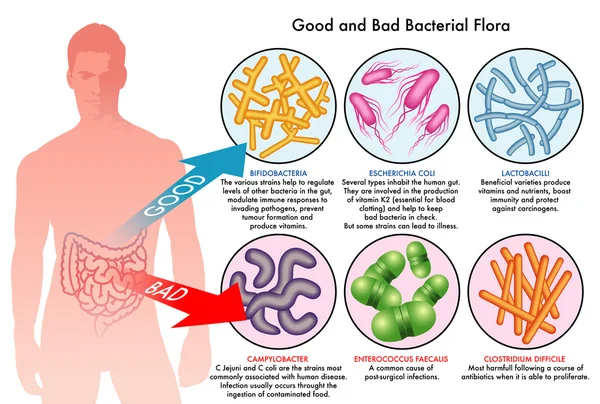
Macrolides: Treating Resistant Strains and Sexually Transmitted Infections
Macrolide antibiotics have anti-inflammatory and immunomodulatory properties, making them an effective option for treating strains of bacteria that are resistant to penicillin. They are commonly used to treat skin, soft tissue, respiratory, and sexually transmitted infections, including chlamydia. Healthcare professionals may prescribe macrolides to treat conditions like acne, rosacea, erythrasma, and pityriasis lichenoides. Examples of macrolide antibiotics include erythromycin, clarithromycin, azithromycin, fidaxomicin, and roxithromycin. However, macrolides, especially erythromycin and clarithromycin, can interact with certain medications.
Proper Use and Potential Side Effects of Antibiotics
It’s essential to follow healthcare professionals’ instructions carefully when taking antibiotics, as improper use can lead to antibiotic resistance and other complications. Potential side effects of antibiotics can include gastrointestinal issues like nausea, vomiting, and diarrhea, as well as more serious effects. Patients should report any adverse reactions to their healthcare provider immediately.
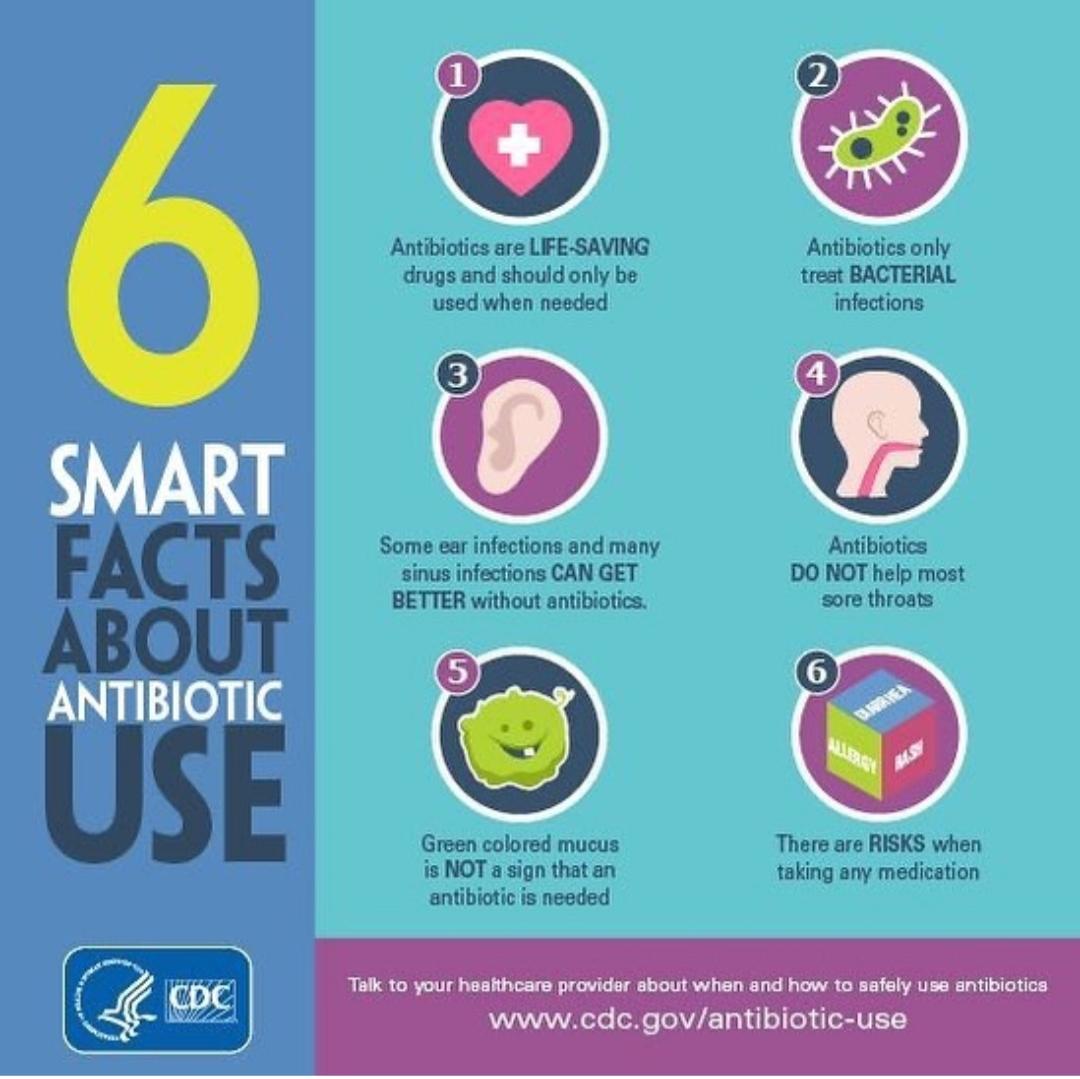
The Importance of Antibiotic Stewardship
Given the growing threat of antibiotic resistance, it’s crucial that antibiotics are prescribed and used judiciously. Healthcare providers play a vital role in antibiotic stewardship, ensuring these important medications are used only when necessary and that patients understand the proper way to take them. By working together, healthcare professionals and patients can help preserve the effectiveness of antibiotics for generations to come.
What Are the Most Common Antibiotics?
Antibiotics are a common, important group of medicines that treat bacterial infections. Some antibiotics attack or break down the cell walls of bacteria, while others inhibit their protein production. This kills the bacteria or keeps it from reproducing and spreading.
Oral antibiotics are available in liquid, tablet, and capsule form. Topical antibiotics include skin creams, sprays, and ointments. Eye ointments, eye drops, and ear drops are also available. Severe infections may require injected or intravenous antibiotics.
Healthcare professionals prescribe different antibiotics to treat conditions such as strep throat, bronchitis, and inner ear infections. In this case, these infections are moderate to severe and have not improved with other treatments.
Antibiotics do not treat viral illnesses, such as a cold, the flu, or mono.
These drugs are grouped according to their antibacterial activity and chemical structure. Specific antibiotics fight certain bacteria, which makes it important to take the right kind. A healthcare professional may ask for a lab culture test to determine which antibiotics you need.
Specific antibiotics fight certain bacteria, which makes it important to take the right kind. A healthcare professional may ask for a lab culture test to determine which antibiotics you need.
Read on to learn more about the most common types of antibiotics and which infections they treat. We also explore the common side effects of antibiotics, which can include gastrointestinal problems like nausea, vomiting, and diarrhea, as well as more serious effects.
Here are some types of antibiotics that doctors prescribe most often.
Penicillins
Penicillins are a common treatment for a variety of skin conditions. They also treat middle ear, kidney, and blood infections. Penicillin antibiotics are effective at killing Staphylococci and Streptococci infections. But some bacteria are resistant to penicillin, due to overuse.
Common penicillin antibiotics include:
- phenoxymethylpenicillin
- dicloxacillin
- amoxicillin with clavulanic acid
- ampicillin
- nafcillin
- oxacillin
- penicillin V
- penicillin G
Potential side effects include:
- nausea
- abdominal discomfort
- diarrhea
- headache
- yeast infection
- liver disease
Penicillin may cause allergic reactions, such as rashes, hives, and breathing difficulties.
Some medications that may interact with penicillin include oral contraceptives and the anti-inflammatories aspirin and probenecid.
Cephalosporins
Cephalosporins often treat gonorrhea, pelvic inflammatory disease, and sinusitis. They also treat urinary tract infections (UTIs), epididymo-orchitis, and cellulitis. Often, doctors prescribe cephalosporins to people who are allergic to penicillin.
Common cephalosporin antibiotics include:
- cefaclor
- cefazolin
- cefadroxil
- cephalexin
- cefuroxime
- cefixime
- cefoxitin
- ceftriaxone
Tetracyclines
Tetracyclines are a group of antibiotics with anti-inflammatory properties that can treat several bacterial infections. They commonly treat chest, urethral, and pelvic infections. Tetracyclines also treat inflammatory skin conditions, such as acne, rosacea, and perioral dermatitis.
Common tetracycline antibiotics include:
- doxycycline
- minocycline
- sarecycline
Children under 12 and pregnant or breastfeeding people should not take tetracyclines because they have the potential to stain developing teeth.
They can also cause inflammation or irritation of the esophagus. To prevent this, make sure to take doxycycline while sitting or standing upright, and have plenty of water. Also, it’s a good idea to avoid sun exposure, since doxycycline causes photosensitivity, which can lead to sunburn.
Finally, it’s best to take this type of antibiotic after eating to prevent nausea, vomiting, and diarrhea.
Minocycline has more potential side effects than doxycycline, though it’s less likely to cause photosensitivity. Possible adverse effects of minocycline include drug hypersensitivity syndrome, autoimmune reactions, and dizziness and headache. Also, using it for a long period may cause blue pigmentation of skin and nails.
Medications that may interact with tetracyclines include:
- systemic retinoids, such as acitretin, isotretinoin, and alitretinoin
- diuretics
- lithium
- anticonvulsants
- rifampicin
- celestipol
- oral contraceptives
Macrolides
Macrolides are an antibiotic group with anti-inflammatory and immunomodulatory properties. They can treat strains of bacteria that are resistant to penicillin. They are also a suitable option for people who are allergic to penicillin or cephalosporin.
They can treat strains of bacteria that are resistant to penicillin. They are also a suitable option for people who are allergic to penicillin or cephalosporin.
These antibiotics commonly treat skin, soft tissue, respiratory, and sexually transmitted infections, including chlamydia. Healthcare professionals use them, for example, to treat skin conditions like acne, rosacea, erythrasma, and pityriasis lichenoides.
Types of macrolides include:
- erythromycin
- clarithromycin
- azithromycin
- fidaxomicin
- roxithromycin
Macrolides, especially erythromycin and clarithromycin, can adversely interact with certain medications. Reactions and toxicity are more common in older adults and people with renal or liver dysfunction.
Medications that may interact with macrolides include:
- calcium channel blockers, such as verapamil
- amiodarone
- methadone
- lithium
- amitriptyline
- citalopram
- anticoagulants, including warfarin and dabigatran
- digoxin
- benzodiazepines
- carbamazepine
- cimetidine
- clozapine
- colchicine
- theophylline
Fluoroquinolones
Fluoroquinolones, also called quinolones, can fight bacterial infections that are life threatening or challenging to treat. However, they are linked with antimicrobial resistance, so you shouldn’t take them unless it’s absolutely necessary.
However, they are linked with antimicrobial resistance, so you shouldn’t take them unless it’s absolutely necessary.
Fluoroquinolones are the first-line treatment for prostatitis, along with severe cases of salmonellosis and shigellosis. Doctors also often use them to treat certain cases of epididymo-orchitis, gonorrhea, and tuberculosis. Sometimes, fluoroquinolones treat urinary, eye, and ear infections.
Types of fluoroquinolone include:
- ciprofloxacin
- ofloxacin
- levofloxacin
- moxifloxacin
For people with renal dysfunction, taking this type of drug may require adjustments to dosages of other medications. And, rarely, fluoroquinolone can cause serious adverse effects, especially in older adults.
Potential side effects include:
- tendon rupture
- aortic aneurysm rupture or dissection
- aortic and mitral regurgitation
- central nervous system excitation and seizures
- QT prolongation
- other cardiac conditions
Sulfonamides
Sulfonamides, also called sulfa drugs, are a type of synthetic antimicrobial that doctors prescribe when first-line treatments are ineffective or contraindicated. The most common type is sulfamethoxazole with trimethoprim, called co-trimoxazole. It treats conditions such as pneumocystis pneumonia and nocardiosis in people with weakened immunity, as well as infections of the lower urinary tract in children.
The most common type is sulfamethoxazole with trimethoprim, called co-trimoxazole. It treats conditions such as pneumocystis pneumonia and nocardiosis in people with weakened immunity, as well as infections of the lower urinary tract in children.
Types of sulfonamides include:
- sulfamethoxazole with trimethoprim
- sulfasalazine
- sulfacetamide
- sulfadiazine silver
Sulfonamides are unsafe during pregnancy because they increase the likelihood of pregnancy loss.
Potential side effects include:
- jaundice in newborns
- candidiasis
- folate deficiency
- headaches
- anorexia
- hyperkalaemia
Medications that may interact with sulfonamides include:
- warfarin
- sulfonylurea hypoglycemic agents
- phenytoin
- methotrexate
Glycopeptides
Glycopeptide antibiotics treat drug-resistant bacteria and gram-positive infections, including multidrug-resistant Streptococcus pneumoniae and methicillin-resistant Staphylococcus aureus, better known as MRSA.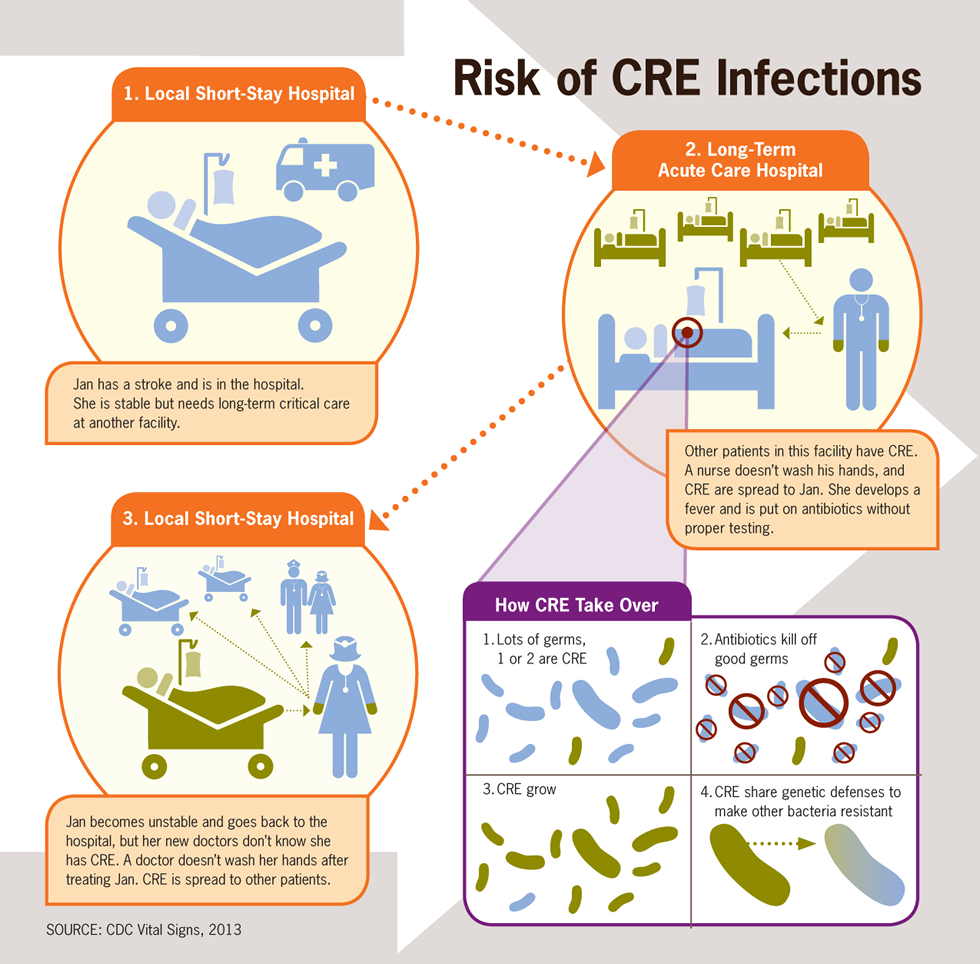
Types of glycopeptides include:
- vancomycin
- dalbavancin
- oritavancin
- telavancin
Below, find answers to common questions about antibiotics.
What is antibiotic resistance?
Antibiotic resistance occurs when bacteria survive or resist antibiotic treatment. Bacteria change and mutate to protect themselves after coming into contact with an antibiotic or other bacteria. Once a type of bacteria is resistant, it passes these genes to other bacteria, which continue to grow. Eventually, they create a new strain of antibiotic-resistant bacteria.
Misusing and overusing antibiotics increases the likelihood of antibiotic resistance. Over time, this may lead to a shortage of medications that can effectively treat common infections.
How can I prevent antibiotic resistance?
To prevent antibiotic resistance, avoid taking antibiotics unless it is essential. Don’t take them for viral infections, such as a cold or the flu.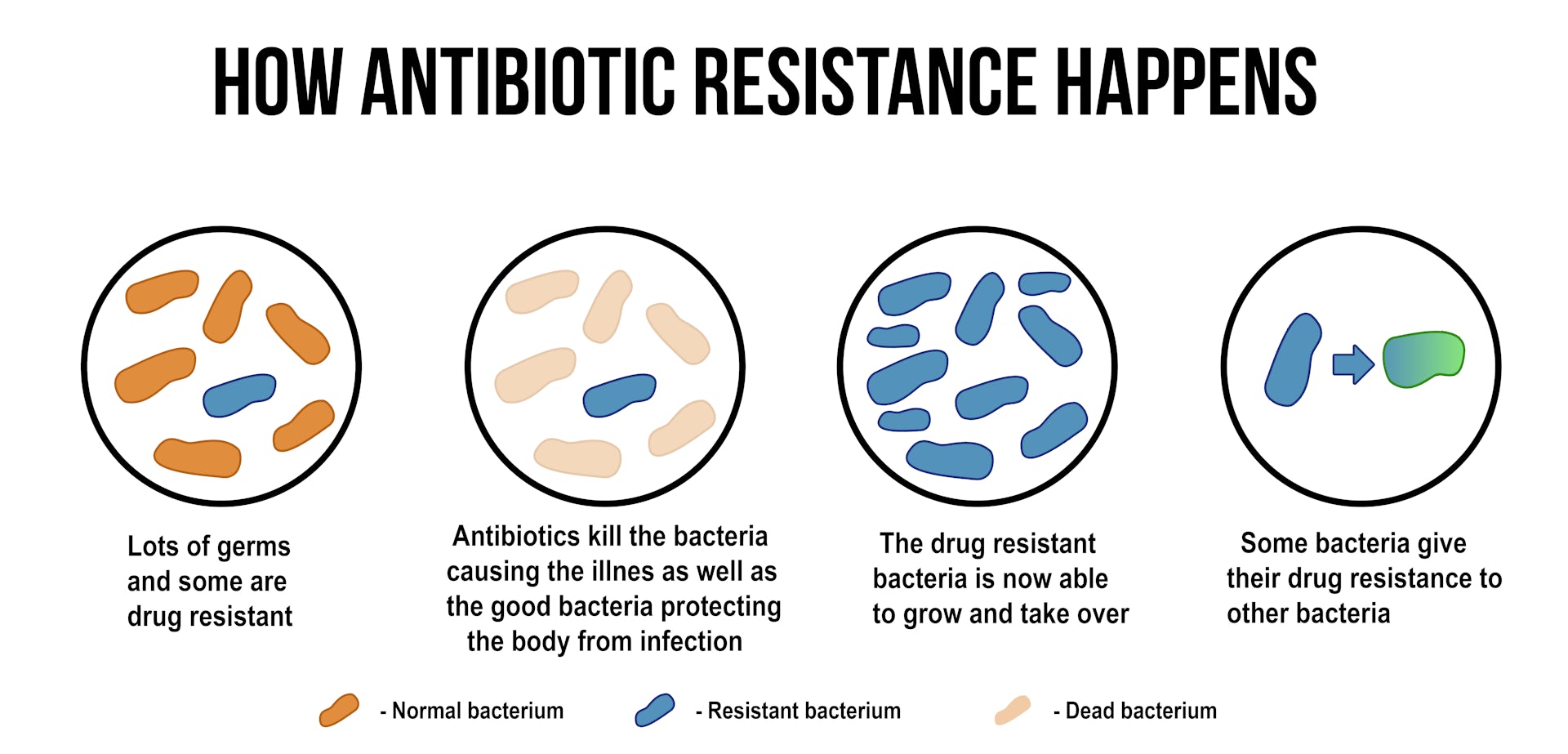 Always follow the instructions from your healthcare professional about how much to take when. To prevent infections, clean your hands and living spaces regularly, and take steps to strengthen your immune system.
Always follow the instructions from your healthcare professional about how much to take when. To prevent infections, clean your hands and living spaces regularly, and take steps to strengthen your immune system.
Are there any natural antibiotics?
Natural antibiotics include honey, thyme essential oil, and oregano essential oil. Extracts of garlic, cranberry, and myrrh also have antibiotic properties. Several herbs are effective antibiotics, including echinacea, turmeric, and ginger.
Natural UTI treatments include D-mannose and uva ursi, along with green, parsley, mint, and chamomile teas.
You can experiment with different combinations of natural treatments to find out which are most effective for your needs.
Antibiotics kill bacteria and prevent them from multiplying. They are valuable drugs that treat bacterial infections. It’s crucial to use them correctly and follow the healthcare professional’s instructions carefully.
It’s also important to be aware of the potential side effects and interactions of antibiotics.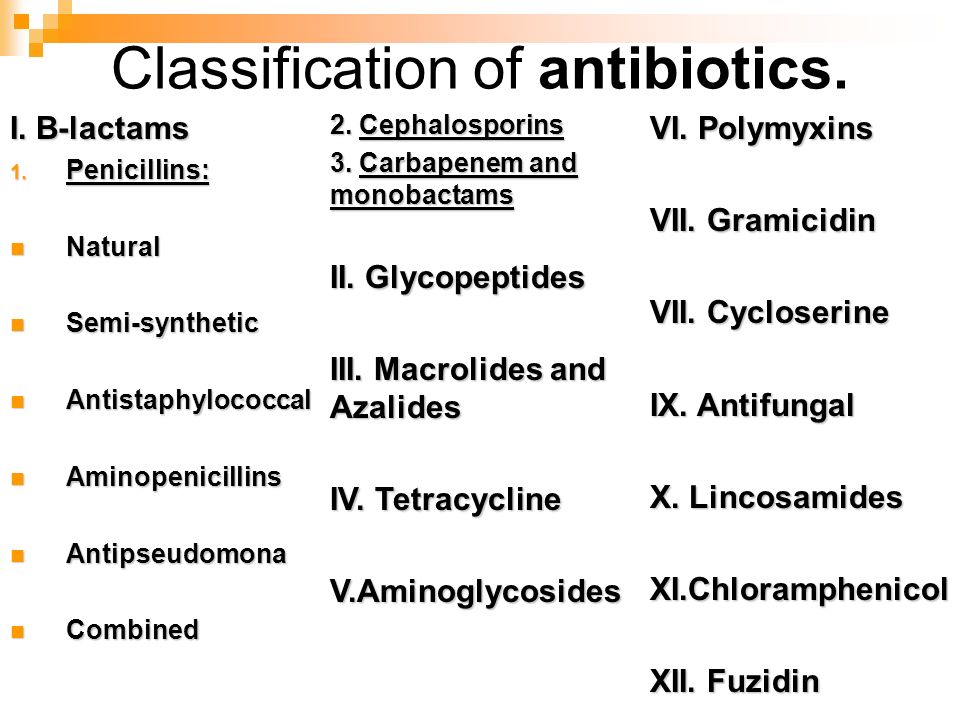 Speak with your doctor if you have any related concerns.
Speak with your doctor if you have any related concerns.
Antibiotic | Definition, Types, Side Effects, Resistance, Classification, & Facts
- Key People:
- Lancelot Thomas Hogben
Selman Abraham Waksman
- Related Topics:
- aminoglycoside
penicillin
tetracycline
methicillin
ceftriaxone
See all related content →
antibiotic, chemical substance produced by a living organism, generally a microorganism, that is detrimental to other microorganisms. Antibiotics commonly are produced by soil microorganisms and probably represent a means by which organisms in a complex environment, such as soil, control the growth of competing microorganisms. Microorganisms that produce antibiotics useful in preventing or treating disease include the bacteria and the fungi.
Antibiotics came into worldwide prominence with the introduction of penicillin in 1941. Since then they have revolutionized the treatment of bacterial infections in humans and other animals. They are, however, ineffective against viruses.
Since then they have revolutionized the treatment of bacterial infections in humans and other animals. They are, however, ineffective against viruses.
The first antibiotics
In 1928 Scottish bacteriologist Alexander Fleming noticed that colonies of bacteria growing on a culture plate had been unfavourably affected by a mold, Penicillium notatum, which had contaminated the culture. A decade later British biochemist Ernst Chain, Australian pathologist Howard Florey, and others isolated the ingredient responsible, penicillin, and showed that it was highly effective against many serious bacterial infections. Toward the end of the 1950s scientists experimented with the addition of various chemical groups to the core of the penicillin molecule to generate semisynthetic versions. A range of penicillins thus became available to treat diseases caused by different types of bacteria, including staphylococci, streptococci, pneumococci, gonococci, and the spirochaetes of syphilis.
Conspicuously unaffected by penicillin was the tubercle bacillus (Mycobacterium tuberculosis). This organism, however, turned out to be highly sensitive to streptomycin, an antibiotic that was isolated from Streptomyces griseus in 1943. As well as being dramatically effective against tuberculosis, streptomycin demonstrated activity against many other kinds of bacteria, including the typhoid fever bacillus. Two other early discoveries were gramicidin and tyrocidin, which are produced by bacteria of the genus Bacillus. Discovered in 1939 by French-born American microbiologist René Dubos, they were valuable in treating superficial infections but were too toxic for internal use.
In the 1950s researchers discovered the cephalosporins, which are related to penicillins but are produced by the mold Cephalosporium acremonium. The following decade scientists discovered a class of antibiotics known as quinolones. Quinolones interrupt the replication of DNA—a crucial step in bacterial reproduction—and have proven useful in treating urinary tract infections, infectious diarrhea, and various other infections involving elements such as bones and white blood cells.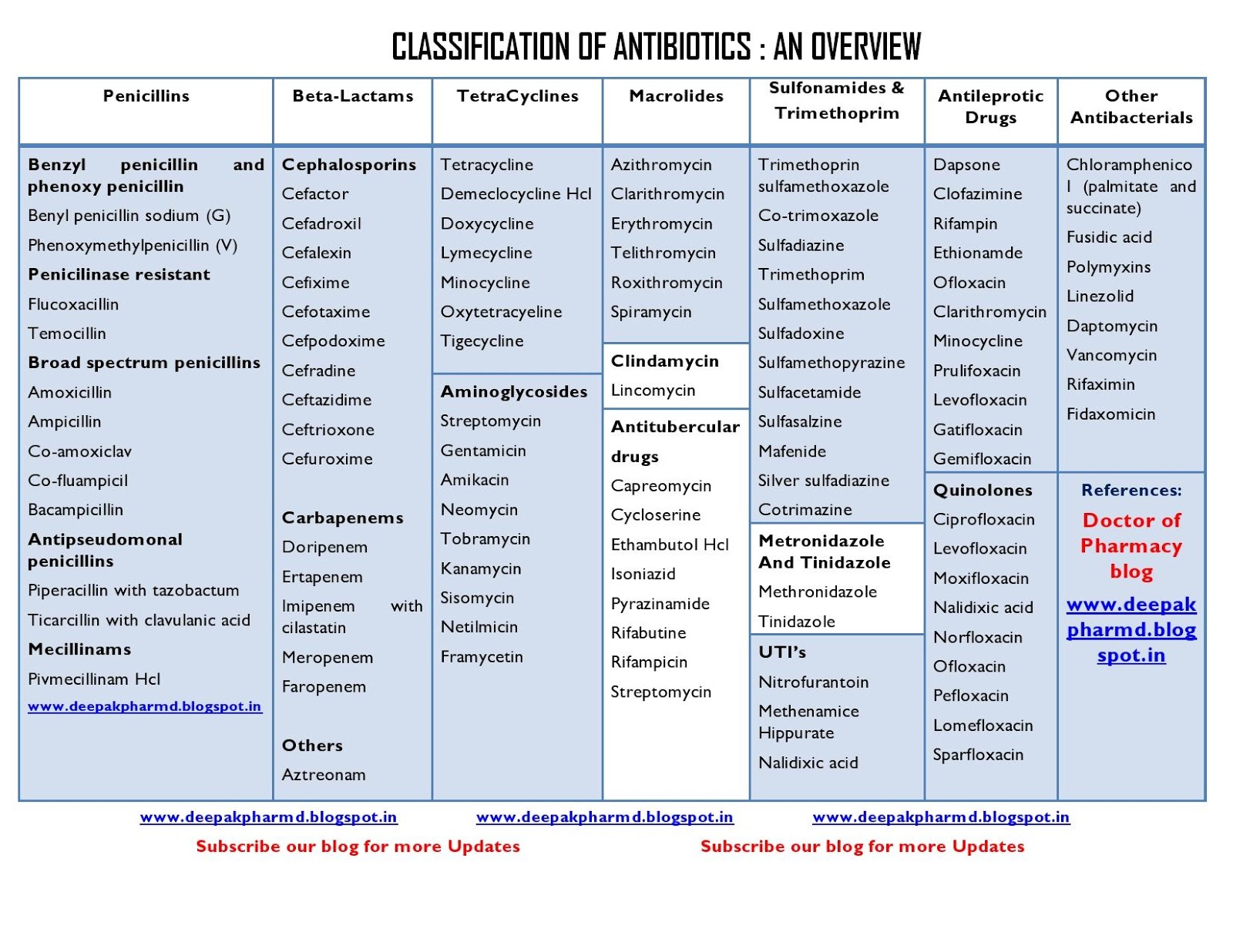
Use and administration of antibiotics
Discover the importance of antibiotics and how to prevent their overuse
See all videos for this article
The principle governing the use of antibiotics is to ensure that the patient receives one to which the target bacterium is sensitive, at a high enough concentration to be effective but not cause side effects, and for a sufficient length of time to ensure that the infection is totally eradicated. Antibiotics vary in their range of action. Some are highly specific. Others, such as the tetracyclines, act against a broad spectrum of different bacteria. These are particularly useful in combating mixed infections and in treating infections when there is no time to conduct sensitivity tests. While some antibiotics, such as the semisynthetic penicillins and the quinolones, can be taken orally, others must be given by intramuscular or intravenous injection.
Get a Britannica Premium subscription and gain access to exclusive content.
Subscribe Now
Categories of antibiotics
Antibiotics can be categorized by their spectrum of activity—namely, whether they are narrow-, broad-, or extended-spectrum agents. Narrow-spectrum agents (e.g., penicillin G) affect primarily gram-positive bacteria. Broad-spectrum antibiotics, such as tetracyclines and chloramphenicol, affect both gram-positive and some gram-negative bacteria. An extended-spectrum antibiotic is one that, as a result of chemical modification, affects additional types of bacteria, usually those that are gram-negative. (The terms gram-positive and gram-negative are used to distinguish between bacteria that have cell walls consisting of a thick meshwork of peptidoglycan [a peptide-sugar polymer] and bacteria that have cell walls with only a thin peptidoglycan layer, respectively.)
Common antibiotics
Some common antibiotics are listed in the table.
| drug class and generic name | common trade names | common uses |
|---|---|---|
| Aminoglycosides (inhibit protein synthesis) | ||
| gentamicin | Garamycin | infections of the respiratory and urinary tracts, blood, abdominal cavity; pelvic inflammatory disease |
| tobramycin | AKTob, Nebcin | infections of the respiratory and urinary tracts, blood, abdominal cavity; pelvic inflammatory disease |
| Cephalosporins (inhibit cell wall synthesis) | ||
| cefaclor | Ceclor | infections of the respiratory and urinary tracts and skin; otitis media |
| cefamandole | Mandol | infections of the respiratory and urinary tracts, skin, bone and joints, and blood; peritonitis |
| cefazolin | Ancef, Kefzol | infections of the respiratory and genitourinary tracts, skin, bone and joints, and blood; endocarditis |
| ceftriaxone | Rocephin | infections of the respiratory and urinary tracts, skin, blood, abdominal cavity, and bone and joints; pelvic inflammatory disease; gonorrhea; meningitis |
| cefuroxime | Ceftin, Kefurox | infections of the respiratory and urinary tracts, skin, bone and joints, and blood |
| cephalexin | Biocef, Keflex | infections of the respiratory and urinary tracts, skin, and bone; otitis media |
| Chloramphenicols (inhibit protein synthesis) | ||
| chloramphenicol | Chloromycetin | infections of the eyes, ears, and skin; cystic fibrosis; prevention of infection in minor wounds |
| Fluoroquinolones (interfere with DNA synthesis) | ||
| ciprofloxacin | Cipro | infections of the respiratory and urinary tracts, skin, eyes, abdominal cavity, and bone and joints; diarrhea; gonorrhea; sinusitis; pneumonia; prostatitis; anthrax |
| norfloxacin | Chibroxin, Noroxin | urinary tract infections, STDs caused by Neisseria gonorrhoeae, eye infections, prostatitis |
| Lincosamides (inhibit protein synthesis) | ||
| clindamycin | Cleocin | infections of the respiratory tract, skin, and abdominal cavity; acne; pelvic inflammatory disease |
| Macrolides (inhibit protein synthesis) | ||
| azithromycin | Zithromax | infections of the respiratory tract and skin; STDs; otitis media; chronic obstructive pulmonary disease; pneumonia |
| clarithromycin | Biaxin | infections of the respiratory tract and skin; otitis media |
| erythromycin | E. E.S., E-Mycin, Eryc E.S., E-Mycin, Eryc | infections of the respiratory tract, skin, and eyes; STDs; pertussis; diphtheria; intestinal amebiasis; otitis media; acne; Legionnaire disease; prevention of infection in minor wounds |
| Nitrofurans (inactivate essential cell components) | ||
| nitrofurantoin | Furadantin, Macrobid | urinary tract infections |
| Penicillins (inhibit cell wall synthesis) | ||
| amoxicillin | Amoxil, Trimox | various streptococcal and staphylococcal infections |
| ampicillin | Marcillin, Omnipen | infections of the respiratory and urinary tract and blood; meningitis; gonococcal infections; endocarditis |
| penicillin G | Bicillin, Pen-G Pot, Wycillin | streptococcal and staphylococcal infections |
| piperacillin | Pipracil | infections of the respiratory and genitourinary tracts, skin, abdominal cavity, bone and joints, and blood |
| ticarcillin | Ticar | infections of the respiratory and gastrointestinal tracts; streptococcal and pseudomonas infections; gonorrhea; tonsillitis; Lyme disease; impetigo; otitis media; meningitis |
| Tetracyclines (inhibit protein synthesis) | ||
| tetracycline | Achromycin, Sumycin | rickettsia, pneumonia, chlamydia, intestinal amebiasis, acne, prevention of infection in minor wounds |
| Miscellaneous antibiotics | ||
| aztreonam | Azactam | infections of the respiratory and genitourinary tracts, skin, abdominal cavity, and blood |
| imipenem-cilastatin | Primaxin | infections of the respiratory and genitourinary tracts, skin, abdominal cavity, bone and joints, and blood; endocarditis |
| isoniazid | INH, Isoniazid, Nydrazid | tuberculosis |
| metronidazole | Flagyl, Protostat | infections of the vagina and gastrointestinal tract |
| rifampin | Rifadin, Rimactane | tuberculosis |
| trimethoprim-sulfamethoxazole | Bactrim, Cotrim, Septra | urinary tract infections, shigellosis, otitis media, bronchitis, traveler’s diarrhea |
| vancomycin | Lyphocin, Vancocin | infections resistant to penicillins and cephalosporins |
Mechanisms of action
Antibiotics produce their effects through a variety of mechanisms of action. A large number work by inhibiting bacterial cell wall synthesis; these agents are referred to generally as β-lactam antibiotics. Production of the bacterial cell wall involves the partial assembly of wall components inside the cell, transport of these structures through the cell membrane to the growing wall, assembly into the wall, and finally cross-linking of the strands of wall material. Antibiotics that inhibit the synthesis of the cell wall have a specific effect on one or another phase. The result is an alteration in the cell wall and shape of the organism and eventually the death of the bacterium.
A large number work by inhibiting bacterial cell wall synthesis; these agents are referred to generally as β-lactam antibiotics. Production of the bacterial cell wall involves the partial assembly of wall components inside the cell, transport of these structures through the cell membrane to the growing wall, assembly into the wall, and finally cross-linking of the strands of wall material. Antibiotics that inhibit the synthesis of the cell wall have a specific effect on one or another phase. The result is an alteration in the cell wall and shape of the organism and eventually the death of the bacterium.
Other antibiotics, such as the aminoglycosides, chloramphenicol, erythromycin, and clindamycin, inhibit protein synthesis in bacteria. The basic process by which bacteria and animal cells synthesize proteins is similar, but the proteins involved are different. Those antibiotics that are selectively toxic utilize these differences to bind to or inhibit the function of the proteins of the bacterium, thereby preventing the synthesis of new proteins and new bacterial cells.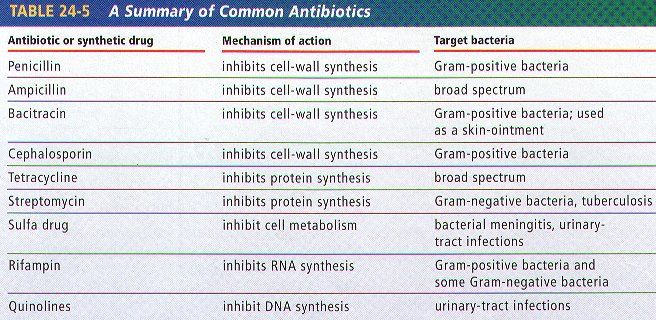
Antibiotics such as polymyxin B and polymyxin E (colistin) bind to phospholipids in the cell membrane of the bacterium and interfere with its function as a selective barrier; this allows essential macromolecules in the cell to leak out, resulting in the death of the cell. Because other cells, including human cells, have similar or identical phospholipids, these antibiotics are somewhat toxic.
Some antibiotics, such as the sulfonamides, are competitive inhibitors of the synthesis of folic acid (folate), which is an essential preliminary step in the synthesis of nucleic acids. Sulfonamides are able to inhibit folic acid synthesis because they are similar to an intermediate compound (para-aminobenzoic acid) that is converted by an enzyme to folic acid. The similarity in structure between these compounds results in competition between para-aminobenzoic acid and the sulfonamide for the enzyme responsible for converting the intermediate to folic acid. This reaction is reversible by removing the chemical, which results in the inhibition but not the death of the microorganisms.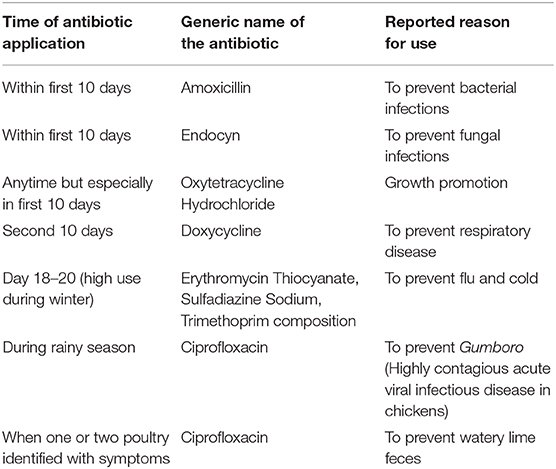 One antibiotic, rifampin, interferes with ribonucleic acid (RNA) synthesis in bacteria by binding to a subunit on the bacterial enzyme responsible for duplication of RNA. Since the affinity of rifampin is much stronger for the bacterial enzyme than for the human enzyme, the human cells are unaffected at therapeutic doses.
One antibiotic, rifampin, interferes with ribonucleic acid (RNA) synthesis in bacteria by binding to a subunit on the bacterial enzyme responsible for duplication of RNA. Since the affinity of rifampin is much stronger for the bacterial enzyme than for the human enzyme, the human cells are unaffected at therapeutic doses.
Antibiotics | GxP News
login
Welcome! Log in to your account
Your username
Your password is
Have you forgotten your password?
Privacy Policy
password recovery
Retrieve your password
Your email address
Antibiotics are substances of natural or semi-synthetic origin that inhibit the growth of living cells, most often prokaryotic or protozoan.
According to GOST 21507-81 (ST SEV 1740-79)
Antibiotic is a substance of microbial, animal or plant origin, capable of inhibiting the growth of microorganisms or causing their death.
Antibiotics of natural origin are most often produced by actinomycetes, less often by non-mycelial bacteria.
- Some antibiotics have a strong inhibitory effect on the growth and reproduction of bacteria and at the same time cause relatively little or no damage to host cells, and are therefore used as medicines;
- Some antibiotics are used as cytotoxic (antineoplastic) drugs in the treatment of cancer.
Terminology
Fully synthetic drugs that have no natural analogues and have a similar suppressive effect on bacterial growth as antibiotics have traditionally been called not antibiotics, but antibacterial chemotherapy drugs. In particular, when only sulfonamides were known among antibacterial chemotherapy drugs, it was customary to speak of the entire class of antibacterial drugs as “antibiotics and sulfonamides”. However, in recent decades, in connection with the invention of many very strong antibacterial chemotherapy drugs, in particular fluoroquinolones, approaching or exceeding “traditional” antibiotics in activity, the concept of “antibiotic” began to blur and expand and is now often used not only in relation to natural and semi-synthetic compounds, but also to many strong antibacterial chemotherapy drugs.
Classification
A huge variety of antibiotics and their effects on the human body was the reason for the classification and division of antibiotics into groups. According to the nature of the effect on the bacterial cell, antibiotics can be divided into three groups:
- bacteriostatic (bacteria are alive, but unable to multiply),
- bactericides (bacteria are killed but still physically present in the medium),
- bacteriolytic (bacteria are killed and bacterial cell walls are destroyed).
The chemical structure classification, which is widely used in the medical environment, consists of the following groups:
- Beta-lactam antibiotics
- Penicillins – produced by colonies of the fungus Penicillium;
- Cephalosporins – have a similar structure to penicillins. Used against penicillin-resistant bacteria.
- Macrolides are antibiotics with a complex cyclic structure.
 The action is bacteriostatic.
The action is bacteriostatic. - Tetracyclines – used to treat infections of the respiratory and urinary tract, treatment of severe infections such as anthrax, tularemia, brucellosis. The action is bacteriostatic.
- Aminoglycosides – highly toxic. Used to treat severe infections such as blood poisoning or peritonitis.
- Levomycetins – Use is restricted due to the increased risk of serious complications – damage to the bone marrow that produces blood cells. The action is bactericidal.
- Glycopeptide antibiotics interfere with bacterial cell wall synthesis. They have a bactericidal effect, but against enterococci, some streptococci and staphylococci, they act bacteriostatically.
- Lincosamides have a bacteriostatic effect, which is due to the inhibition of protein synthesis by ribosomes. In high concentrations against highly sensitive microorganisms may exhibit a bactericidal effect.

- Antifungal – destroy the membrane of fungal cells and cause their death. Action is lytic. Gradually replaced by highly effective synthetic antifungal drugs.
Source: Wikipedia
Return to Glossary main page
Manage consent
MORE STORIES
Rules for prescribing antibiotics | doc.ua
Antibiotics are powerful drugs used to fight bacterial infections. They work by killing bacteria or preventing them from growing and multiplying. Therefore, it is so important to know the rules for prescribing antibiotics. When prescribed correctly, you should only take antibiotics when they are needed because they can cause side effects and promote the development of antibiotic resistance. In this article we will talk about the basic principles for choosing and prescribing antibiotics.
Indications for antibiotics
Most of the bacteria that live in your body are harmless. Some are even helpful. Nevertheless, bacteria can infect almost any organ, which is an indication for antibiotics.
Some are even helpful. Nevertheless, bacteria can infect almost any organ, which is an indication for antibiotics.
Here are the types of infections that are an indication for antibiotics:
- Some ear and sinus infections.
- Dental infections.
- Skin infections.
- Meningitis (swelling of the brain and spinal cord).
- Angina. About what antibiotics to drink for angina, you can read in our article “An antibiotic for angina (tonsillitis), which is better”.
- Bladder and kidney infections.
- Bacterial pneumonia.
- Most sinus infections.
The purpose of antibiotics is to treat bacterial infections. Colds (antibiotics are not prescribed for colds), flu, most coughs, some bronchitis infections, most sore throats, and stomach flu are caused by viruses. Prescribing antibiotics for a viral infection is a mistake. Antibiotics will not work to treat them. For this type of disease, the doctor will prescribe antiviral drugs.
Algorithm – Antibiotic prescribing schedule
What are the principles of rational antibiotic prescribing? There are different types of antibiotics, both in action and form. The doctor selects the appropriate algorithm for prescribing antibiotics in accordance with the symptoms, severity and other important factors of the diagnosed disease.
Some antibiotics work on many different kinds of bacteria. They are called “broad-spectrum antibiotics”. Others target only certain bacteria. These are known as “narrow spectrum”. What are the principles for choosing and prescribing antibiotics? Sometimes a doctor may prescribe an expensive antibiotic that is no different in quality and active ingredient from its cheaper counterpart. You can find cheap analogues of expensive antibiotics in our article.
Take this medicine according to the instructions on the package or the patient information leaflet that comes with the medicine, and according to your doctor’s antibiotic prescribing schedule.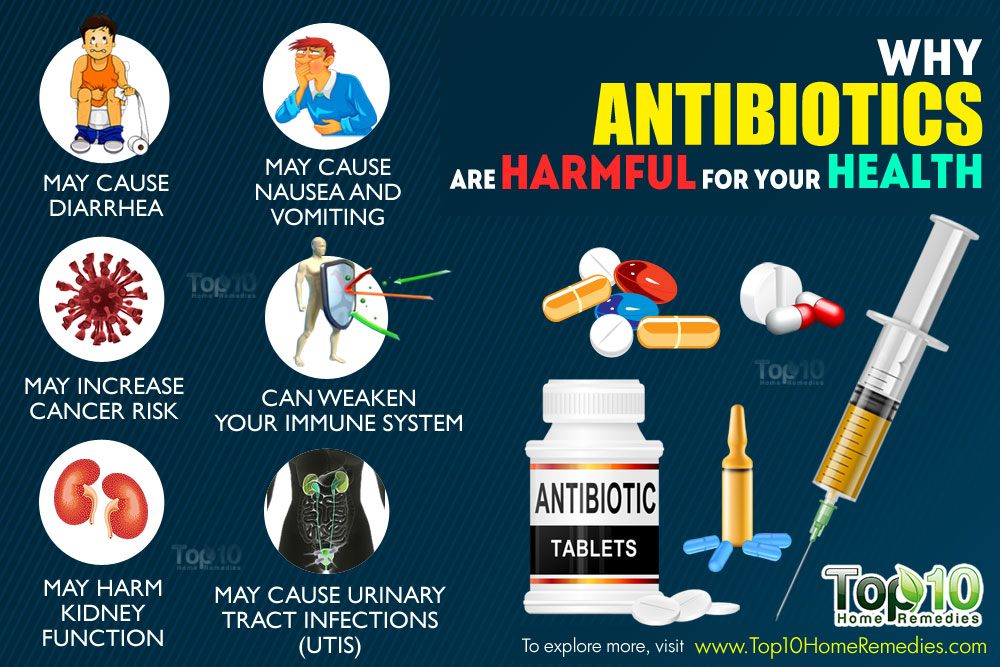
Antibiotics can be in the following forms:
- Tablets, capsules or liquid – these can be used to treat most types of mild to moderate infections in the body.
- Creams, lotions, sprays, and drops are often used to treat skin, eye, or ear infections.
- Injection – These can be given as an injection or drip directly into the blood or muscle and are used for more serious bacterial infections.
Antibiotics for children
Children rarely need antibiotics. Most childhood infections are caused by viruses. Indications for prescribing antibiotics in children, as in adults, are bacterial infections. Antibiotics only treat diseases caused by bacteria, not viruses. Guidelines for Prescribing Antibiotics in Children: If your child has been prescribed antibiotics for a bacterial infection, he should be better in 2 or 3 days.
Antibiotic probiotic
Probiotics are live bacteria and yeast that are beneficial to health. They are often referred to as “good”, “good” or “healthy” bacteria. Probiotics are prescribed if you suffer from stomach cramps, gas, or diarrhea while taking antibiotics. The addition of a probiotic may help reduce or even prevent these symptoms. It will also bring back the good bacteria in your digestive tract that have been killed or reduced by the antibiotic.
Probiotics are prescribed if you suffer from stomach cramps, gas, or diarrhea while taking antibiotics. The addition of a probiotic may help reduce or even prevent these symptoms. It will also bring back the good bacteria in your digestive tract that have been killed or reduced by the antibiotic.
How to take antibiotics correctly
As we have already figured out above, the doctor determines the regimen for prescribing antibiotics, depending on the disease and its degree. Self-administration of an antibiotic can aggravate the disease, especially if it is not chosen correctly.
When you take antibiotics, it is important that you use them responsibly. Usually, the algorithm for prescribing antibiotics and taking them is as follows:
- Do not postpone antibiotics for later. As soon as the doctor prescribes the treatment and writes out antibiotics according to an electronic prescription, you must immediately buy the drug. Antibiotics – buy in pharmacies of the city, prices at Doc.
 ua.
ua. - Always follow instructions carefully. Don’t stop taking your medicine early, even if you feel better. If you stop taking them too soon, some of the bacteria may survive and re-infect you.
- Do not share your antibiotic with others. Treatment with antibiotics is highly individual.
- Do not take antibiotics prescribed for another person. It can only harm and cause side effects.
- Trust your doctor. If the specialist says that you do not need antibiotics, do not self-medicate.
- Do not take antibiotics for a viral infection.
Antibiotic prophylaxis
Antibiotic prophylaxis is very rare and may be recommended by a doctor to prevent infection in some situations where the risk of infection is high. Here are the most common:
Dental procedures. Bacteria from the mouth can enter the bloodstream during certain dental procedures. This is usually not a problem for people with healthy immune systems. They easily cope with many infections. People with certain conditions are more likely to develop infections. Some of these include: artificial heart valve, congenital heart problems, serious heart infections.
People with certain conditions are more likely to develop infections. Some of these include: artificial heart valve, congenital heart problems, serious heart infections.
Operations. Some types of surgeries carry a high risk of infection. Your doctor will likely prescribe you prophylactic antibiotics if you are having one of these types of surgery. Some of these surgeries include:
- Head or neck cancer surgery.
- Neurosurgery, i.e. surgery on the head or spine.
- Operations to place a device inside you, such as a shunt or a pacemaker.
- Hysterectomy (removal of the uterus).
- Certain orthopedic surgeries such as hip or knee replacements.
- Heart surgery.
- Organ transplantation.
- Caesarean section.
Is it possible to drink antibiotics without a doctor’s prescription? Antibiotics are powerful bacteria-fighting agents when used carefully and safely. But up to half of all antibiotic use is unnecessary.


 The action is bacteriostatic.
The action is bacteriostatic.
 ua.
ua.